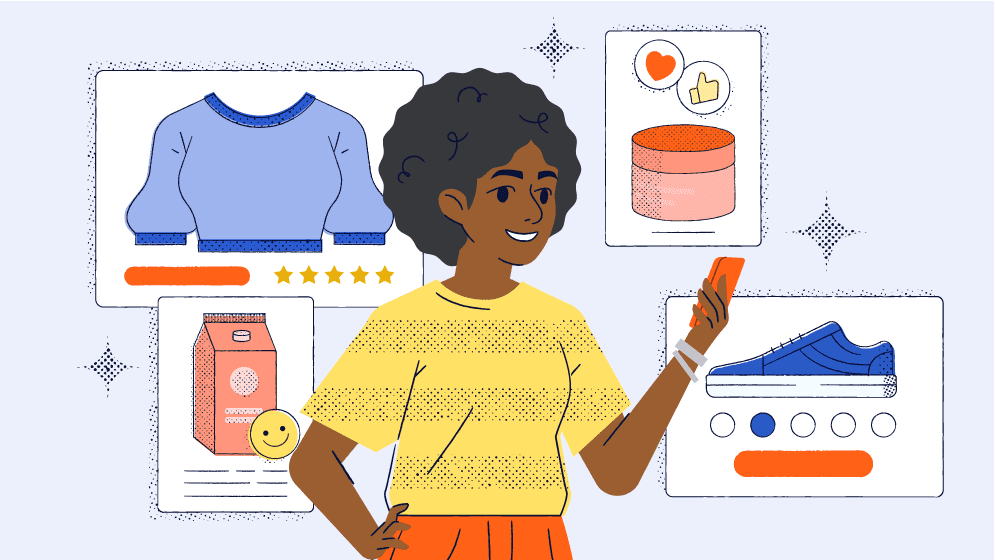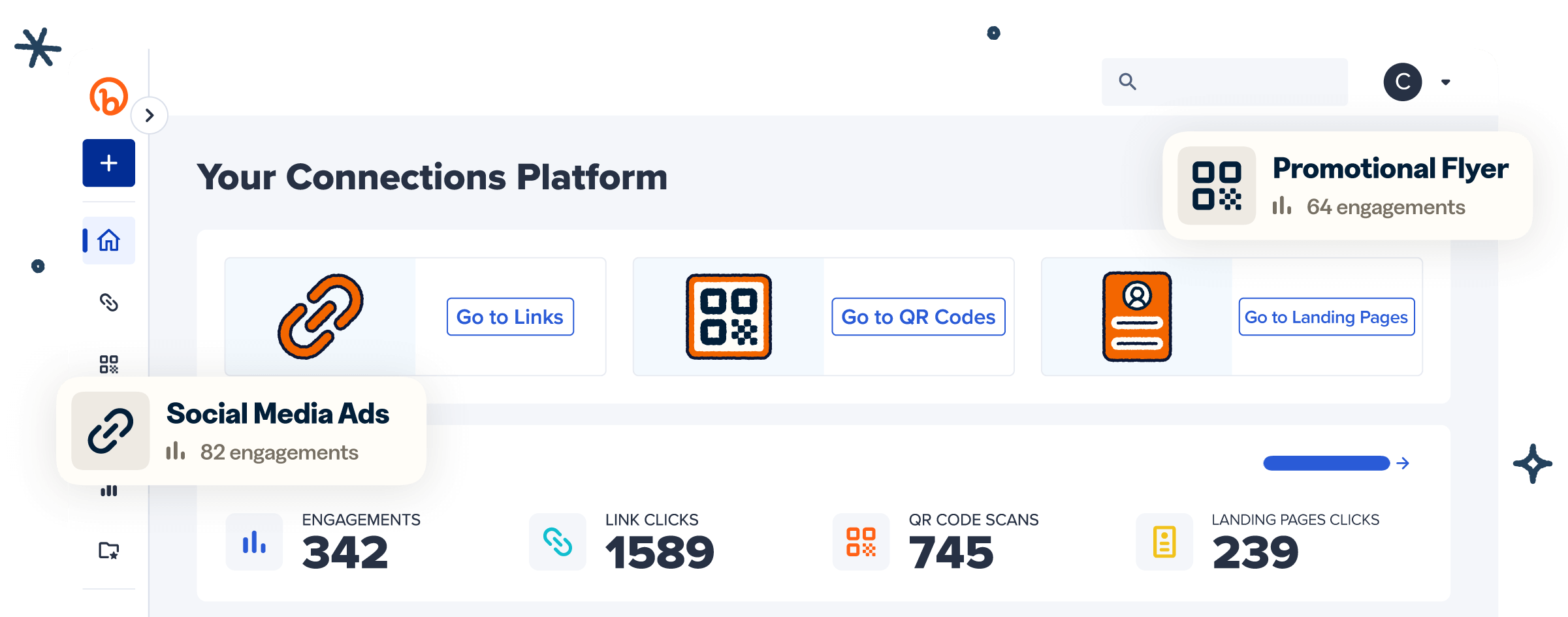How do you turn a casual, one-time buyer into a lifelong fan of your brand? The key to unlocking repeat purchases is making meaningful connections with your customers—and that doesn’t just happen overnight. For consumer packaged goods (CPG) brands, creating seamless and measurable customer experiences every step of the way is a must. After all, brand loyalty is something you build over time across many interactions with your customers.
Daily essentials like cosmetics, household cleaning products, snack foods, and drinks are all necessities we buy regularly. When CPG brands prioritize building loyalty with customers, they can rise through the ranks and become their first choice every time, which means more repeat purchases and stronger sales. And what brand doesn’t want to be top-of-mind when customers are stocking up on the basics or even treating themselves to a little something special?
Loyalty isn’t just an intangible, warm-fuzzy feeling, either—it directly impacts your bottom line. So how do you encourage repeat purchases with tools like QR Codes? And what are the keys to unlocking customer loyalty that sticks? Luckily, you’ve come to the right place. Let’s get into it!
The importance of repeat customers for CPG
Repeat customers are consumers who purchase your products over and over again. And while product quality, competitive pricing, and reliability all impact repeat purchase rates, the entire customer experience plays an equally important role. From how customers feel about your brand to the loyalty programs or rewards you may offer, every bit counts.
CPG brands know all too well how tough it is to compete for consumer attention and wallet share these days. Not only is the CPG industry packed (no pun intended!) with new competitors and long-standing industry giants, but brands also face a challenge when it comes to reaching customers directly. In most cases, CPG companies manufacture their products and send them to major retailers for brick-and-mortar distribution. This leaves brands at the mercy of big-box stores for everything from shelf placement to consumer insights.
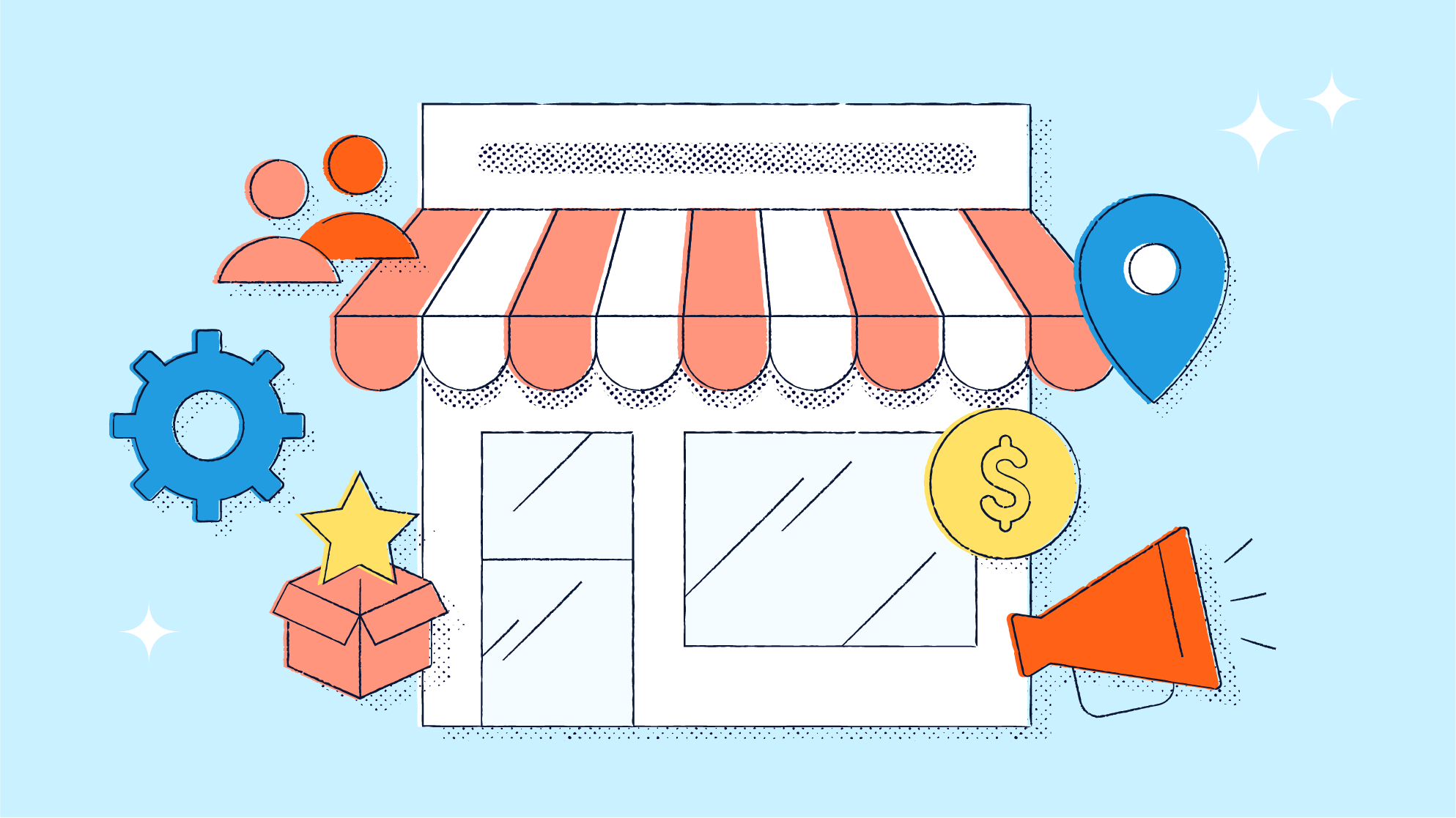
These retailers give CPG brands visibility and wide exposure to consumers, but they also serve as both the middleman and the barrier between brands and their customers. Without a direct line to engage their audience and understand behaviors, CPG companies face an uphill battle. How do you entice a consumer to purchase your product again when your access to them is limited?
Given these challenges, CPG brands need to get creative and find new ways of building brand loyalty that translates to sales. In times of economic instability, many brands tend to rely more on current customers for growth rather than entering into new markets, which makes the focus on customer retention even more valuable.
To grow as a business, encourage repeat purchases, and outpace competitors, CPG brands need to create die-hard fans—and luckily they can do it with the help of technology.
QR Codes as a tool for consumer connection
CPG brands need a direct line to consumers—one that lets them engage audiences instantly and provides first-party data—to understand consumer behavior and preferences. That way, brands can rely less on retailers to serve as a “matchmaker” for their relationships with shoppers. They can instead reach customers on their terms and timelines.
QR Codes offer major flexibility across virtually limitless use cases and give CPG brands the chance to pack a ton of information into a small space on any package, flier, or insert. By 2027, the CPG and retail industries are expected to transition from 1D UPC barcodes to 2D barcodes, like QR Codes, in large part for this very reason. Soon enough, information-rich QR Codes will be present on every product, allowing brands to connect with consumers and create brand-building experiences with the simple scan of a code from anywhere in the world.
With 88% growth in QR Code creations year-over-year in both the retail and CPG industries, there’s no denying the powerful punch QR Codes can pack. So what are you waiting for? Here’s how you can start building loyalty that drives repeat purchases today.
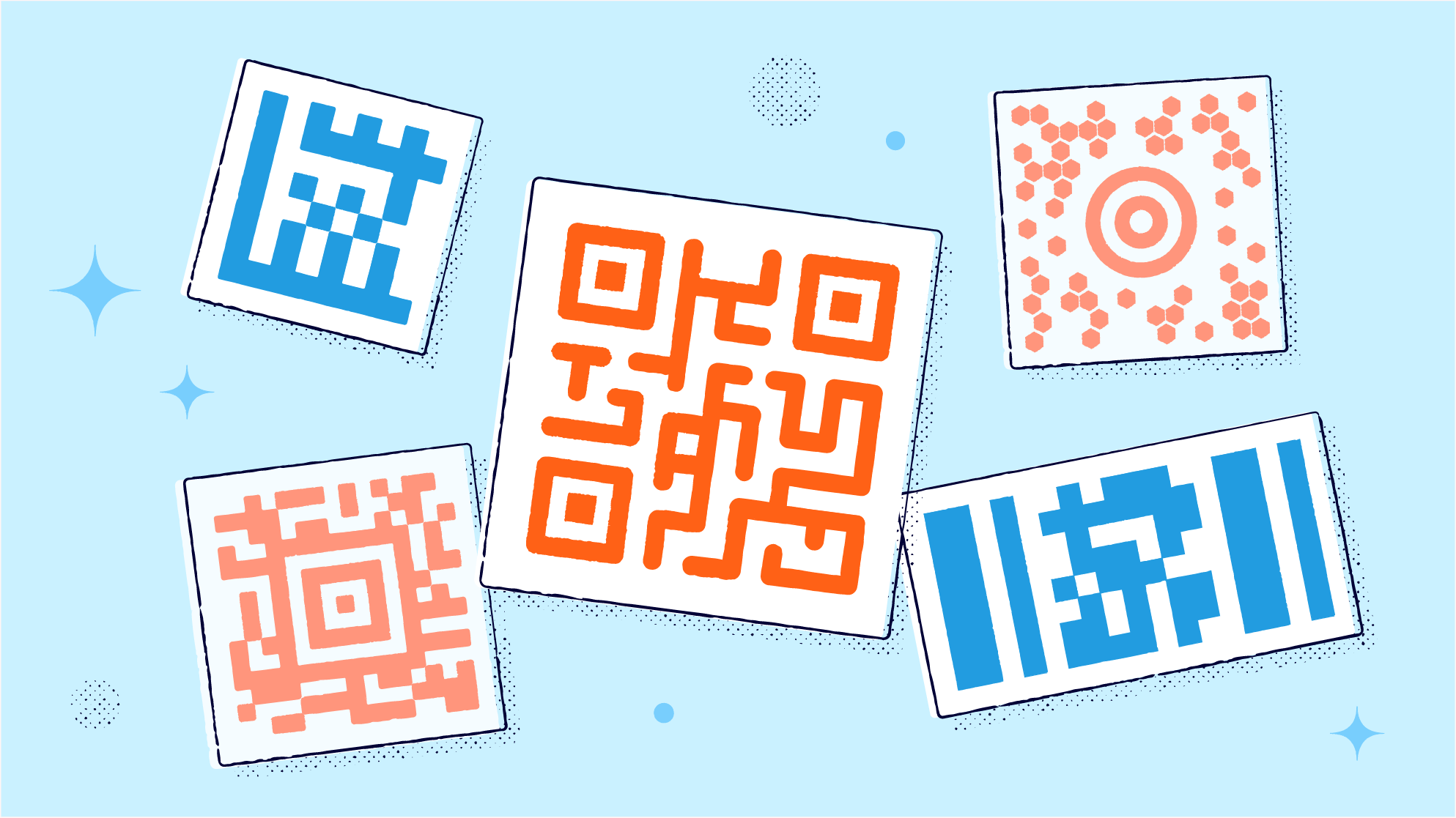
9 ways to boost repeat purchases
It’s not just brands that want more loyalty—customers do, too. In fact, according to Merkle’s recent Loyalty Barometer report, 81% of consumers say they want a direct relationship with brands. So when you send your products out into the world, think about how you can boost loyalty and you’ll reap the benefits of long-term sales and repeat purchases. Explore these nine tactics and start thinking about how you can turn one-time, sporadic buyers into raving fans.
1. Know your customers (and the numbers!)
The best way to serve your customers and give them more of what they love is to know what resonates with them. What kind of content and offerings are they most excited about? Which discounts or coupons make buying an immediate yes? Don’t just guess at the answers to questions like these—look to the data to find out, then do more of what works.
Want real-time, in-store, and first-party data? This is where QR Codes shine. With every scan, you gain instant information about what your audience loves and who they are—like geographic scan data and when they scan—so you can personalize their experience with your brand. When consumers notice that you pay attention to what they want, they’ll feel a connection to you and keep coming back.
2. Consider value-driven philanthropy
Consumers are invested in the values of the brands they buy from, with 82% percent of shoppers saying that they want a brand’s values to align with their own. CPG brands can turn their values into action and endear consumers by giving back to causes that they believe in.
Brands like Warby Parker and Bombas have built massive followings through their buy-one-give-one models. Other brands, like Patagonia, don’t just commit to sustainable production practices—they also donate a percentage of their profits to preserving and protecting the environment.
Farm-frozen food brand Daily Harvest donates $5 to sustainable farming every time someone scans its QR Codes featured on freezer door clings across Kroger grocery stores in the U.S. Efforts like these show that brands don’t just tout their values—they take steps to make the world a bit better.
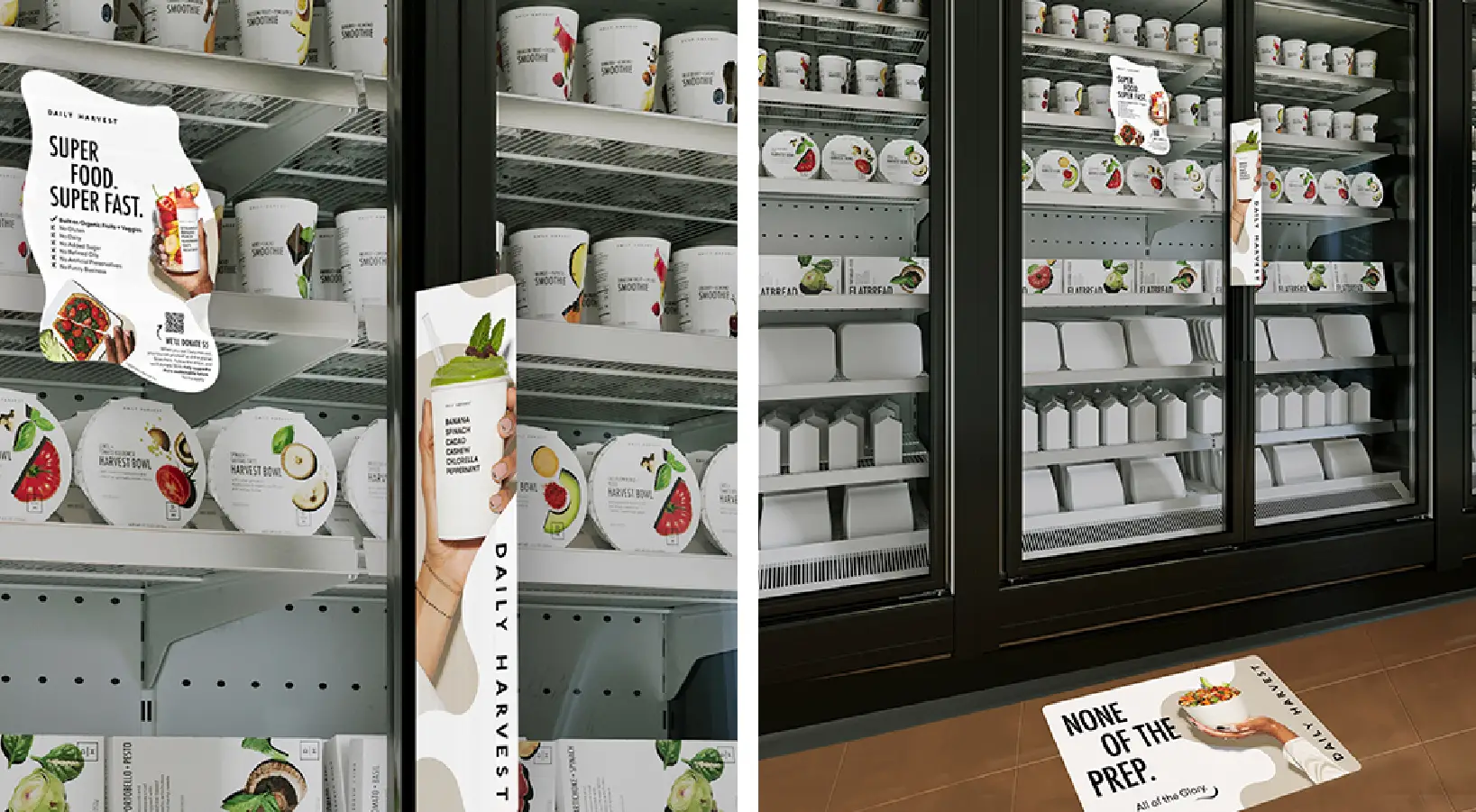
Consider identifying a cause that aligns with your business values and use QR Codes to make your impact known. Whether you donate products or proceeds to the cause, partner with a nonprofit to encourage consumers to donate themselves, or give back to people in crisis, consumers will connect to your efforts and your brand when it’s time to buy.
3. Be more transparent
Even just a few years ago, it was common for companies to keep all of their production and distribution practices under lock and key. Now, not only does the internet make behind-the-scenes details more available, but consumers also expect companies to be transparent about where products come from and how the sausage is made.
Transparency builds trust, and trust is key for driving repeat purchases that customers feel good about. 46% percent of customers say they’re willing to pay more for brands they trust—which means a focus on transparency could lead to an increase in revenue when done right.
QR Codes give CPG brands the chance to be more transparent with every package sold by sharing information about their sustainability practices or an individual product’s journey from ingredients to store shelves. Brands that offer proactive and easy access to in-depth information—with the simple scan of a code—show customers they can depend on them for quality products and quality practices.
4. Focus on convenience
Want to build the most loyal following possible? It’s not enough to just offer the highest-quality products. Brands need to create friction-free customer experiences, too. CPG brands make major strides in building customer loyalty by creating a convenient experience for reordering their products, whether in-store or from the comfort of their homes.
Whether a shopper buys your product in-store or online, there are several ways to connect with them after purchase to make reordering quick and easy. Print QR Codes directly on-pack or add them to packaging inserts and point customers to your website so they can make another purchase when their supply is running low. Just be sure to add a clear call to action to the QR Code so your customers know what to expect on the other end of the scan!
If you offer an extensive product line, send QR Code scans to a quiz or product recommendation page that offers up suggestions for other products from your brand they might enjoy. Capture their attention when they’re actively seeking out more information, and they may just purchase directly from your website—take that, big box stores!
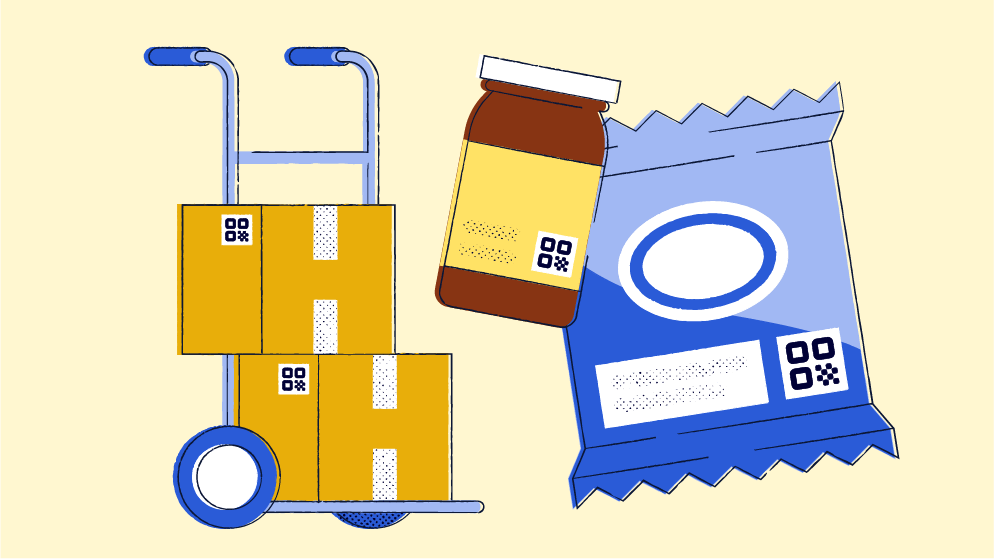
5. Go above and beyond with support
CPG brands might not receive as many customer support inquiries as say, technology or service-based businesses, but they do often answer questions about ingredients or product usage best practices. And while these questions might not flood in daily, handling them effectively remains crucial for maintaining customer satisfaction and loyalty.
Shoe brand Zappos is widely known for its value of customer service and passion for going to extremes for customers. Positive support interactions—like sending flowers to an unhappy customer—led to faithful fans and long-time brand advocates. Thermos brand Stanley also recently made major headlines (and more than one fan for life) when it offered to replace a customer’s car after a fire destroyed her vehicle. Perhaps just as surprising? Her Stanley tumbler came out unscathed.
Opportunities to blow your customers away with top-notch service don’t come along every day. But when they do, CPG brands can drive loyalty that converts to repeat sales when they don’t just simply respond with an answer. Instead, empathize and go the extra mile to put a smile on your customer’s face.
6. Start a loyalty program
It may be a bit on the nose, but a loyalty or rewards program is one of the best ways to recognize your repeat buyers and encourage them to keep buying from you. Include a QR Code on every package as an instant way to let shoppers log into their accounts, track points, or redeem rewards. As shoppers get closer to each new milestone, they’ll get excited for their next purchase.
Rewards programs offer additional benefits for your brand, too. They let you gather first-party data about consumer behavior, such as their frequency or seasonality of purchases and which products they love most. By understanding your audience collectively and then delving into individual shopping behaviors, you can tailor your marketing efforts to every shopper. You’ll provide experiences they’re likely to appreciate while highlighting products they’re more inclined to purchase, creating a more personalized and appealing shopping experience.
7. Try influencer marketing
The $21 billion influencer market has more than tripled in value in the past four years, making it a valuable marketing strategy for brands big and small. Consumers rely heavily on the recommendations of the influencers they follow via their Instagram and TikTok feeds for everything from makeup recommendations to gluten-free cereal.
Even though consumers might not have a personal relationship with these influencers, the trust and connection they build with their audience can significantly impact their perceptions of CPG brands. By way of a trusted influencer, your brand can also become the go-to brand for their audience. A bonus? You can easily measure the success of any influencer marketing campaign you run by using tools (like Bitly Short Links!) to generate tons of unique links that you can directly attribute to each influencer you work with. You can easily track engagement metrics on organic shares and tie your efforts directly back to sales on your site. It feels like magic!
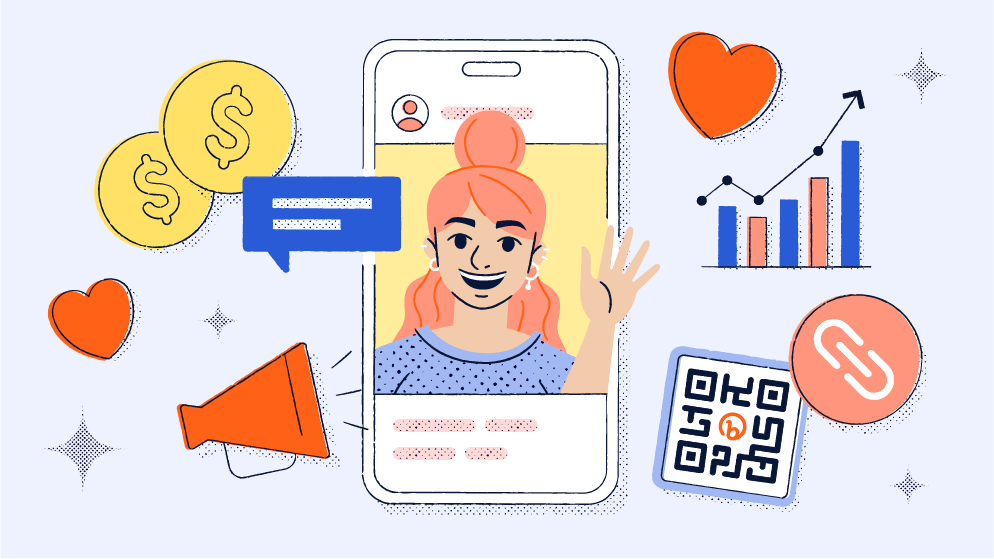
8. Give more value than you get
Think of the brands you love and have earned your loyalty. Chances are, their marketing isn’t all selling all the time, pushing their product everywhere you look, or begging for data across every interaction. Instead, they probably lead with value, whether that’s easy-to-navigate resources, relevant discounts or recommendations, or funny, relatable content.
Brands that seem to effortlessly build loyalty put in a ton of effort behind the scenes—that’s because they give customers more than they get. Don’t be afraid to tap into your creativity and find ways to offer relevant, surprising, or even generous value to your audience. They’ll remember those efforts every time they see your product on the shelf and pick you over competitors every time.
9. Create interactive digital experiences
Looking for a new recipe to try out? Want to learn how to apply your eyeshadow just right? For the CPG industry, there are endless opportunities to get creative and show consumers how to use your products in unexpected ways. Cosmetics brands flourish by showcasing diverse makeup looks and offering everyday or special occasion tips. Health-focused products shine by sharing wellness advice tailored to their target audience. And don’t forget about interactive quizzes—you can actively help shoppers pick the best product for their needs with customized results.
Interactive content gets customers involved and excited about using your products. Use QR Codes to share videos or articles on each package and point customers to your social media channels to grow your audience and engagement across multiple channels. When you’re the first name customers think of when they’re looking for new ideas, that’s a sign that you’ve built deep awareness and, most likely, loyalty.
Connection is the key to customer loyalty
Consumers are loyal to the CPG brands that truly “get” them—the ones that make them laugh and have provided unforgettable support experiences (even just once!). They love brands that share helpful content, offer special rewards, and keep them coming back for more. These experiences forge a connection that’s built to last.
Brands that lead with value and engage their audience with tools like QR Codes will see the direct revenue impact that comes from building customer relationships. If you try to take shortcuts to sell your products, you might get a sale. But when you play the long game and aim to build brand loyalty, your business grows—and your pool of repeat customers does, too.
